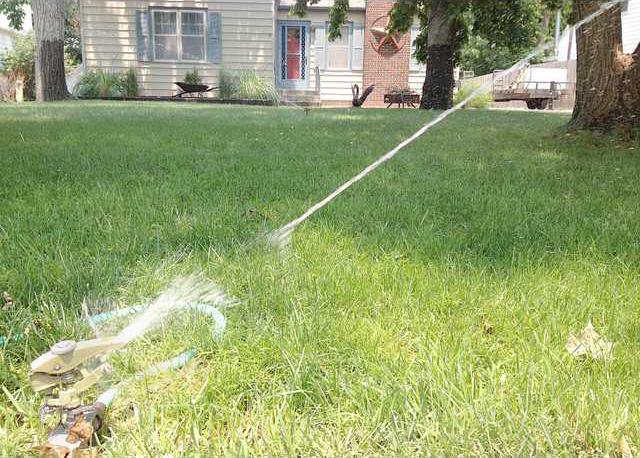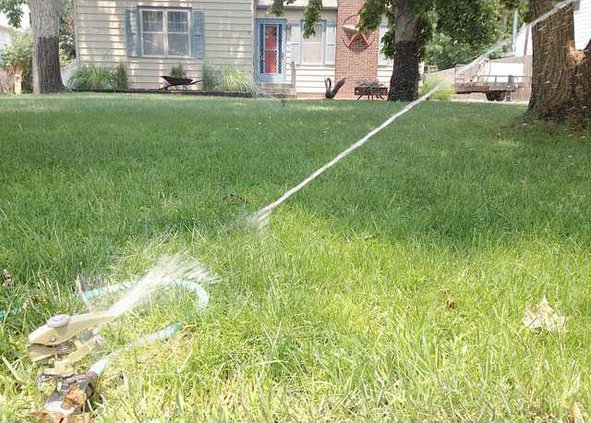As of Tuesday, June 18, the U.S. Drought monitor showed Barton County still firmly in the Extreme Drought category. However, a tiny sliver on the eastern edge had been pushed back to Severe Drought status. That’s before more rain fell in the Great Bend area this week. It’s enough to give homeowners hope for drought affected landscapes once more.
But we’re not out of the woods yet, Barton County Ag Extension agent Alicia Boor said. It’s important for all people who use water, for home landscapes and for agricultural purposes, to remember that it will take time to build back the moisture in subsoil and the aquifer. Every time we water, we’re taking away from what is slowly being rebuilt.
One way some homeowners react to higher water prices is to drill a well for watering with. Without the monthly bill from the city, it’s easy to pick up bad watering habits, Boor said.
“Well use affects everybody,” Boor said. “Subsurface water replenishes by .75 to 1 inch a year. If we drop it 4 inches a year with indiscriminate watering, it’s eventually going to run dry, and then what do you do?” There are wells going dry, she said. Everything together makes a big differences.
It’s important to be aware of how many inches of rain water has fallen, and adjust watering accordingly. One easy way to make sure you are only watering what the landscape needs is to set out empty cans around the watering area of you sprinklers and find out how much water is delivered in a half hour. Then, you can calculate how long to leave your sprinkler running to get the right amount delivered to the landscape. Be sure to keep track of local rainfall, either by setting out a rain gauge and monitoring it, or accessing an online resource. Be sure to subtract the rainfall amount from the amount your landscape requires.
“Education is really the key on making sure you know how much was evaporated,” she said.
Watering in the evening is best. In the early morning, cool temperatures and moisture could lead to fungal diseases. Watering during the heat of the day means more evaporation will occur, so you’ll have to water longer to give your landscape the drink it needs.
In the Great Bend area, living close to the river means many properties have sandy soil.
“You need to be more sparing with water.,” Boor said. Be sure to water trees deep every two or three weeks. Water grass three times a week for an hour or so. It goes through our soil pretty easily.”
It’s also important to find sprinklers that keep water low to the ground, Boor said. This, and drip or sub-irrigation in flower beds, will also guard against excess evaporation.
Replacing thirsty plants and grasses with native and drought resistant varieties is a good long-term strategy too, Boor said. Instead of deep greens and vibrant colors, in this area the lighter or grayish greens and lighter, shades of flowering plants with plenty of yellows usually hold up better in this area. Natives have totally different rooting systems, that stretch out to absorb as much water as possible. This makes them more difficult to propagate in nurseries, leading to higher costs. However, their hardiness can pay off big in the long run, she said.
Not out of the drought yet
Responsible water use and natives could make recovery long-lasting





